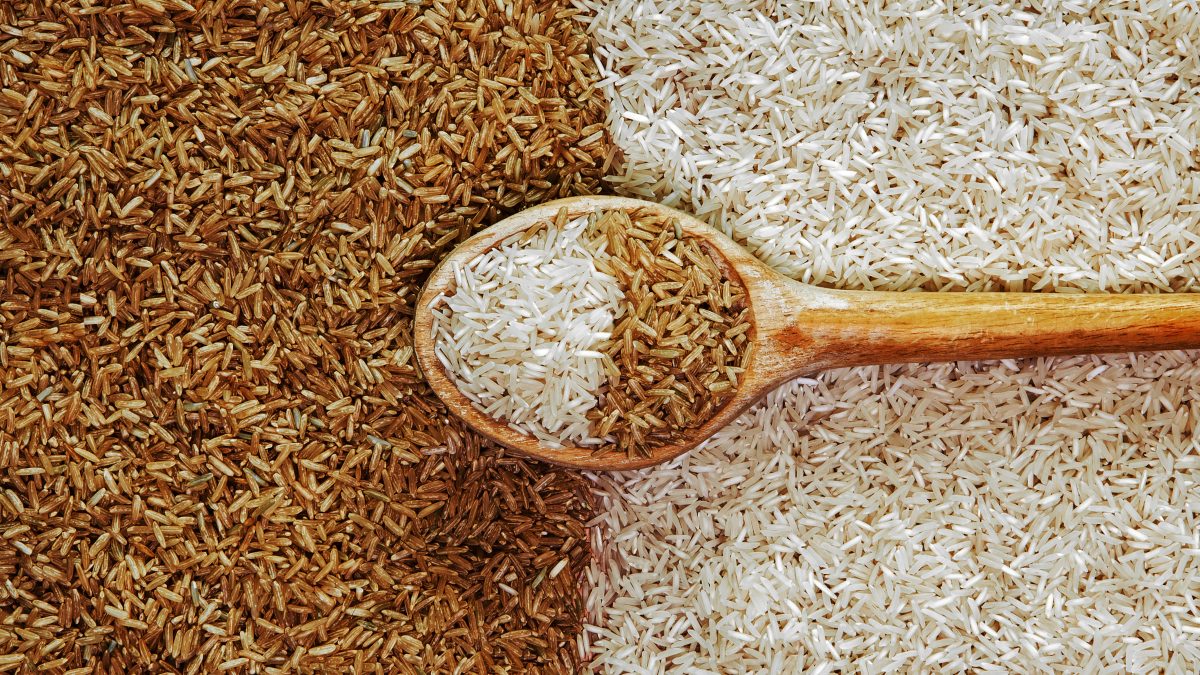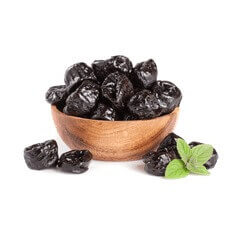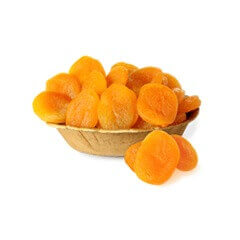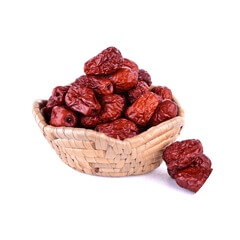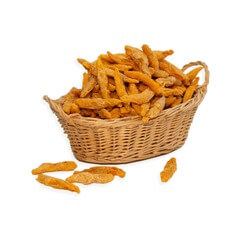Rice mainly provides carbohydrates and vegetable proteins, and the number of calories hardly varies from one rice to another.
In summary, brown rice provides more essential minerals than white rice. Their amount of carbohydrates is quite similar, but those contained in the complete version are better quality; these are complex carbohydrates. They are absorbed more slowly by the body than simple carbohydrates and provide a lasting feeling of satiety.
Calories and Glycemic Index According To the Types of Rice
The nutritional value of carbohydrates depends on the transformation that the rice may have undergone; white varieties offer fast sugars that are less beneficial for health. Thus, the glycemic index of brown rice remains significantly lower than white rice.
Basmati Rice
Basmati rice belongs to the category of fragrant rice. Precisely, its name means “fragrant” in Hindi. It is grown mainly in India and Pakistan and has long, not very wide kernels. It is found in the white, semi-complete, or complete version. There are also wide varieties of basmati. It is a non-sticky rice that is served as an accompaniment to fish or meat. Its slightly spicy aroma also goes wonderfully with curry-based preparations.
The best way to cook basmati rice is still steaming it or in a pot of water. At the end of cooking, the grains will be even longer than before, but they will retain their lightness.
Thai Rice
Cultivated northeast of the border between Thailand and Cambodia, Thai rice has long, fine, and tender grains. Very fragrant, it reveals a rather characteristic floral aroma and joins basmati in the category of fragrant rice.
This variety ideally accompanies dishes in a sauce, meat, and fish. It is marketed in white, complete, or semi-complete forms. Regarding its cooking, it is best to use a pot of water brought to a boil.
Round Rice
The different varieties of round rice are very high in starch. The grains, small and round, absorb a significant amount of liquid during cooking. This characteristic gives them a particularly unctuous texture. Round rice is sticky and is therefore used to make sushi, and it is also used in risotto or desserts such as rice pudding or milk cake.
The rice should be cooked in a pot of water, covered, and brought to a boil. The classic round rice comes from China or India.
In this category, we also find arborio rice from Italy, which is widely used for preparing risotto and arancini (a culinary specialty of Sicily). Similarly, bomba rice has round pearl-colored grains. Very rare, it is grown in the region of Valencia in Spain. It is used to prepare certain traditional dishes such as paella.
Camargue Rice
As its name suggests, this strain originates from the Camargue, that famous coastal region in the south of France. Its grains can be round or long, white or complete, and their color can also differ from one rice to another, from white to brown to red. Camargue rice has a protected geographical indication (PGI). The latter provides guarantees to the consumer, particularly in terms of quality, cultivation method, and provenance. The Camargue remains the only French region where rice is produced.
This starch has an exceptional nutritional value thanks to its many minerals, B vitamins, and fiber content. The different types of rice that this variety brings together make it possible to find one for each recipe!
Regarding its cooking time, it takes a good quarter of an hour, even 20 to 25 minutes, for some products. Camargue rice can be cooked in several ways: pilaf, boiled or steamed.
Jasmine Rice
Sometimes called “Thai rice,” jasmine rice is native to Southeast Asia. It is a succulent variety that diffuses a very intense floral fragrance. It is usually found in the white or semi-complete form. Its cooking method remains equivalent to traditional Thai rice, and its flowery flavor makes it a choice accompaniment. It is a long and fine-grain rice.
Black Rice
The name “black rice” includes a set of rice varieties of Asian origin. These are brown rice with a high nutritional value. They are a source of E and B group vitamins, antioxidants, essential amino acids, and trace elements, including iron, calcium, zinc, and phosphorus.
With its light nutty taste, organic black rice is used in various preparations: rice noodles and porridge. Since 1997, a new variety of black rice of Chinese origin has been produced in northern Italy: riso Venere or Venus rice.
How to Cook Rice?
Think you know everything about cooking rice? However, some essential steps are often omitted! A brief update on the main cooking methods.
- Cooking rice in a saucepan: First, rinse the rice to remove any impurities it may contain and excess starch, giving it a sticky texture. It is then immersed in boiling salted water. Adding rice stops boiling; you will therefore have to wait for it to resume to time the cooking time and cook covered and over low heat.
- Cooking rice in the pressure cooker: Put the rice and water in the pressure cooker, lock the lid properly, and start cooking for the time indicated. Once the cooking is finished, it is important to take the rice out quickly so that it does not continue to cook inside.
Cooking Time for Rice in a Pan According To the Varieties
- White basmati rice: 11 mins
- Whole basmati rice: 35 mins
- White Thai rice: 10 to 15 mins
- Whole-grain Thai rice: 30 mins
- Round rice: 12 to 15 mins
- Jasmine rice: 10 minutes
- Black rice: 45 mins
Visit the ADNOOR website to get the best long-grain rice, golden Sella basmati rice, brown rice, white rice, Super Kernel Basmati Rice, nuts, seeds, and dried fruits. We take pride in saying that we are the Best Basmati rice brand in Canada and have been the importers, exporters, wholesalers, distributors, and co-packers of various nuts and grains in Canada for the last 25 years. So, without wasting time, visit our website and order what you need.

